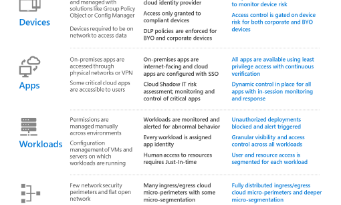Top Tips For Home Cybersecurity And Privacy In A Coronavirus-Impacted World

Welcome to the new normal. We’re all now living in a post-COVID-19 world characterized by uncertainty, mass home working and remote learning. The lines demarcating normal life have shifted abruptly – perhaps never to return. That’s not the worst that can happen, as we all know, but it does mean we all need to get used to new ways of living, working and studying from home. This has major implications for the online safety, security and privacy of our families.
To help you adapt to these new conditions while protecting what matters most, Trend Micro has developed a two-part blog series on “The New Normal.” Part 1 identifies the scope and specific cyber-threats of the new normal. Part 2 provides security tips and products to help address those threats.
What’s going on?
In April, nearly 300 million Americans were estimated to be in government-mandated lockdown. Even as some businesses, municipalities and states begin to relax these rules, experts have warned of subsequent waves of the virus, which could result in new localized lockdowns. In short, a lot of people will continue to work from home, while their children, also at home, attempt to study remotely from their mobile devices.
This has considerable implications for how we spend our time. Without that morning commute to work or school, more of it than ever will involve sitting in front of a desktop, laptop, tablet or smartphone screen. Even the smart TV is enlisted. Dangers include
|
|
Risky behavior
Unfortunately, the increase in working from home (WFH), especially for those not used to it, may lead to an increase in risky behavior, such as: using non-approved apps for work; visiting non work-related sites on work devices; and using personal devices to access work resources. Recent global Trend Micro research found that:
|
|
This is not about restricting your freedom to visit the sites you want to visit while at home. It’s about reducing the risk of exposing corporate data and systems to possible malware.
What are the bad guys doing?
Unsurprisingly, there has also been a major uptick in the volume of cyber-threats targeting home users. With a captive audience to aim at, it’s a huge opportunity for cyber-criminals to steal your log-ins and personal data to sell to fraudsters, or even to steal corporate passwords and information for a potentially bigger pay-off. They are helped by the fact that many home workers may be more distracted than they usually would be at the office, especially if they have young children. Your kids may even share the same laptops or PCs as you, potentially visiting risky sites and/or downloading unapproved apps.
There’s also a chance that, unless you have a corporate machine at home, your personal computing equipment is less secure than the kit you had in the office. Add to that the fact that support from the IT department may be less forthcoming than usual, given that stretched teams are overwhelmed with requests, while themselves struggling to WFH. One recent report claimed that nearly half (47%) of IT security pros have been taken off some or all of their typical security tasks to support other IT-related jobs. In another, only 59% of respondents said they believe their cybersecurity team has the right tools and resources at home to perform their job effectively.
It’s time to step up and take security into your own hands. Stay on the lookout for the following threats.
|
|
So what’s a remote worker/concerned parent to do to protect themselves and the family in the midst of the “new normal?”
Read Part 2 in this mini-series, which we’re publishing simultaneously with Part 1, where we share some best practice advice on how to keep your digital lives and work systems safe from online threats during lockdown—and where we provide tools to help you do just that.
Read More HERE



